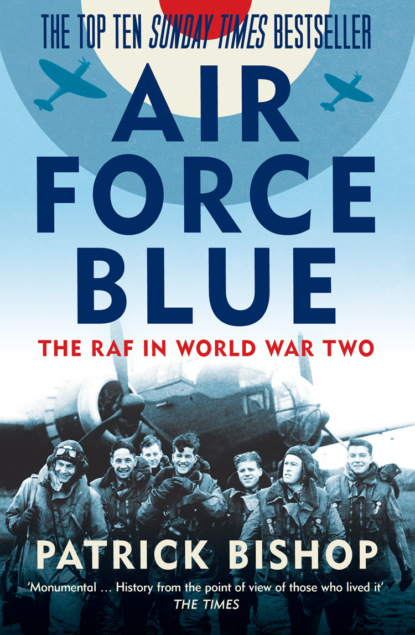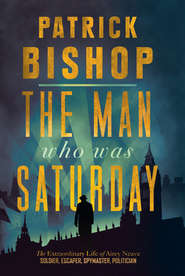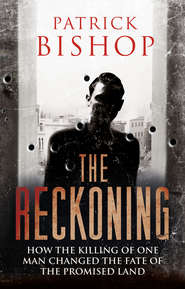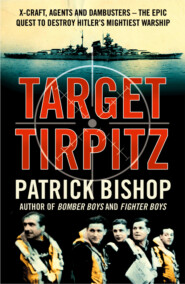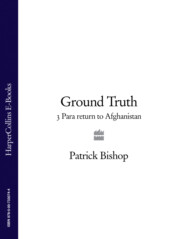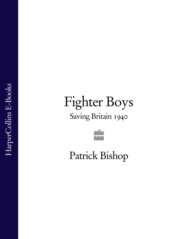По всем вопросам обращайтесь на: info@litportal.ru
(©) 2003-2024.
✖
Air Force Blue: The RAF in World War Two – Spearhead of Victory
Настройки чтения
Размер шрифта
Высота строк
Поля
The Cranwell course was rigorous and for much of the period the conditions were spartan. The cadets were marooned in the back of beyond. Sleaford, the nearest town, offered few temptations; one reason Trenchard had chosen the site was its distance from the fleshpots of London. After the rigours of boarding school, most of the entrants found it easy to cope. Peter Townsend, son of a colonial civil servant, arrived at Cranwell in 1933 from Haileybury where life at the outset at least was ‘hard and sometimes cruel [and] there was no one to help us but ourselves … Survive your first two years at Haileybury and you could survive anything.’22 (#litres_trial_promo) At Cranwell he ‘submitted, gladly for the most part, to the intensive and variegated process which was to mould me as a pilot, an officer and a gentleman’.
Brian Kingcome, another son of the empire, started in 1936 after leaving Bedford School, which had developed strong links with Cranwell. ‘The college schedule was very civilised,’ he remembered.23 (#litres_trial_promo) ‘Each day, including Saturday, began with an early morning parade, and there was a church parade on Sunday. Parades were followed by classes, including an hour or so a day of flying instruction. Wednesday and Saturday afternoons were set aside for sport. We dined formally in mess each night from Monday to Friday. From Monday to Thursday we wore mess kit consisting of leg-hugging mess overalls strapped under half-Wellingtons, with black tie, blue waistcoat, stiff shirt and butterfly collar.’ Dining in mess at weekends was optional when the dress code was slightly more relaxed – a suit on Saturdays and tweed jacket and flannels on Sunday.
Smartness was something of a fetish for the authorities. Tim Vigors, from a family of Anglo-Irish landowners, set off in January 1939 for his first term at Cranwell with hair cropped considerably shorter than he had worn it at his old school, Eton. On the train he bumped into an acquaintance, also Cranwell-bound, who advised him it was still too long, so he stopped off at a barber shop for another trim. On his first morning he lined up on the parade ground in regulation suit and bowler hat for inspection by a large and fierce warrant officer, who, after prowling up and down the line, stopped menacingly in front of him. He then ‘bellowed at the top of his voice, for the whole of Cranwell to hear, “What do you think you are sir? A bloody woman! Go and have yer hair cut!” Vigors hurried off for his third visit to the barber in two days.24 (#litres_trial_promo)
The reverence for spit and polish, for parades and bull, was at odds with the reputation of the wartime RFC. On the ’dromes of the Western Front dress codes and discipline were relaxed and drilling and parading were not highly regarded. The emphasis on appearance was another instance of the determination of Trenchard and his followers to show that the RAF could match the other services in every department, down to the precision of their marching and the shine on their boots. The attitude rubbed off on some of the cadets, who, when the next war came, would frown on what they saw as the casual attitude of the greatly expanded service.
Soaked in the public school ethos, Cranwell offered a huge variety of sports and activities. There was rugby, football and cricket, of course, but also athletics, squash, tennis, badminton, fencing, hockey, swimming, boxing, basketball, rowing and water polo. The surrounding countryside offered shooting, fishing and above all riding to hounds. Lincolnshire was prime fox-hunting country and the Quorn and the Belvoir would sometimes meet at the college. Riding was voluntary but encouraged. The belief that a good horseman made a good pilot, dating from the first days of aviation, was still strong, ‘the thinking being that the sensitive hands which could coax the best from a horse would be those most suited to the delicate controls of a flying machine’.25 (#litres_trial_promo) The same applied to yachtsmen, and a declared enthusiasm for sailing always went down well at interviews. The course included history, English, foreign languages, though as the college authorities admitted, in 1935 the officer responsible for organizing the academic programme faced a ‘difficult and sometimes ungrateful task’.26 (#litres_trial_promo)
The cadets were attracted principally by the thrill of flying. There was certainly plenty of theory on offer from the course lectures on engineering and aerodynamics. The practice, though, was something else. Townsend reckoned that in his two years at Cranwell he clocked up only 157 hours of flying time, the same as a Luftwaffe trainee amassed in nine months.27 (#litres_trial_promo) One reason for not letting cadets get airborne too often was that flying, particularly for novices, was still a very dangerous business. They started off on the Avro Tutor, a small open-cockpit biplane with a 240hp engine which, according to Kingcome, was ‘completely vice-free’ and ‘stood up to the cruellest abuse with a happy smile’.28 (#litres_trial_promo) Then in their second year they moved on to ‘service type’ aircraft. The Bristol Bulldog, which arrived in November 1933, was fine when flying straight and level, but, as Peter Townsend discovered, in a spin ‘she was a bitch’.29 (#litres_trial_promo)
Putting an aeroplane into a deliberate spin then getting out of it was a regular exercise. One day Townsend was aloft with his instructor Flying Officer A. F. McKenna, a ‘burly, smiling man with a rolling gait like a sailor’. They climbed to above 8,000 feet, which given the aircraft’s proclivities was set as the minimum height at which the manoeuvre should be attempted, then McKenna in the rear cockpit told his pupil through the Gosport speaking tube to ‘spin her to the left off a steep turn’. Townsend pushed the stick forward and the Bulldog spiralled briskly downwards. After three turns McKenna told him to ‘bring her out’. Townsend followed the prescribed counter-intuitive drill of shoving the stick forward again and applying opposite rudder but nothing happened. He wrote:
We were sinking rapidly and I was conscious of an eerie hush, of the clatter of the engine’s poppet valves and the reek of burning castor oil … of the propeller, in a slow tick-over, brushing the air, of the air rushing past my ears and through the bracing wires, making them whine, while the aircraft pitched and tossed in a sickening, circular movement, totally, hopelessly, out of control. ‘I’ve got her!’ yelled McKenna, now far from cheerful. Banging open the throttle lever, pumping the stick, kicking the rudder, he tried to rock the Bulldog back into flying position. In vain. ‘Get ready to jump,’ shouted McKenna and I moved my hand to the quick release of my … harness, praying to God that I should not have to pull it. With throttle, stick and rudder McKenna kept fighting the Bulldog. We were down to 2,000 feet when at last he brought her back to an even keel with just enough height left to dive and pick up flying speed. His voice, now very quiet, came through the speaking tube: ‘That was a near one. Now climb her up again and we’ll do another.’
Others were not so lucky. During Townsend’s time at Cranwell a mid-air collision killed two instructors and two cadets. Their dismembered bodies had to be collected from trees and fields for burial. The perils of flying training did not end there. Of the young men who passed through Cranwell between the wars, sixty-two were killed in flying accidents, many more than died in RAF operations in the same period.30 (#litres_trial_promo)
The Apprentice Schools were set up with the same devotion to excellence. Obviously, the RAF depended on a high level of mechanical expertise to function. Trenchard decided that the best way to create a dedicated workforce of career technicians was ‘to enlist the bulk of our skilled ranks as boys and train them ourselves’.31 (#litres_trial_promo) The Apprentice Training Schemes started in April 1920. The Army and Navy tended to draw their recruits from the ranks of the young, poor and unskilled. The RAF, declared a 1934 article, was ‘different from any other Service. The aircraftmen are the elite of their class. All, by comparison with former days, are educated. A great many of them are well-educated … in no other Service is there closer association between all ranks.’32 (#litres_trial_promo)
Applicants had to have the School Certificate, an exam normally sat at the age of sixteen with papers in five subjects including English, mathematics, a foreign language and a science. Most British children left school at the first legal opportunity aged fourteen to find jobs and contribute to the family budget.
Candidates were nominated by local education authorities and sat a competitive exam which included papers in maths, experimental science and English. The intake was much bigger than Cranwell – upwards of three hundred a year. The great disparity in numbers reflected a basic fact about the nature of air forces. To function, the RAF needed a longer logistical and support tail than the Army or even the Navy and ground personnel greatly outnumbered fliers. By 1945, in an Air Force numbering more than a million, only 17.7 per cent flew aircraft. The function of the other 82.3 per cent was to project them into battle.33 (#litres_trial_promo) Even so, the Apprentice Schools could not fill all technical manpower needs and qualified tradesmen had to be recruited directly from civilian life to make up the shortfall.34 (#litres_trial_promo)
Successful applicants for apprenticeships were expected to serve at least ten years with two on the reserve. Clothing, food and lodging was free and boys under eighteen got one shilling, then one and sixpence a day, the older ones three shillings. Those destined for the larger trades – the fitters who serviced the engines and the riggers who looked after the airframes – were trained at Halton, a former Rothschild mansion in Buckinghamshire which had been bought by the War Office at a knock-down price. Those specializing in wireless technology were housed in a school on the Cranwell complex.
Trenchard’s enthusiasm for the apprentice scheme was as great as his devotion to Cranwell. Those who passed through it would be known as ‘Trenchard’s Brats’. In some ways the Apprentice School mirrored the college. The boys lived a regimented life in which competition in everything was encouraged and smartness was enforced. Hubert Rawlinson, who arrived at Halton as a sixteen-year-old from Bolton in late August 1939, found himself plunged into an austere world where almost every minute was accounted for and rules governed virtually all human activity. After a bone-shaking ride from Wendover station in three-ton lorries with solid rubber tyres the new boys were set down at Bulback Barracks.
‘We came to a halt by a huge parade ground and climbed down from the vehicles,’ he wrote.35 (#litres_trial_promo) ‘A roll call was made and we were then taken to three gigantic barrack blocks, each having six large rooms with rows of beds either side. Each bed had a wooden locker alongside, a wooden box which could be padlocked underneath the bed, and a steel locker fastened to the wall above. Underneath the wall locker were three clothes pegs fastened to a frame. The beds were made in two halves, the front sliding into the rear; no springs but thin metal slats … upon the beds stood three square biscuit mattresses, five brown blankets, two calico sheets and a head bolster. Twenty of us were placed in each room …’ After this sobering beginning they were taken across to the dining hall for their first taste of service cuisine: rissole and chips followed by suet pudding and custard.
After three weeks of square bashing and PT they were assessed to determine which trade they would be trained in for the next three years. The order in which they were interviewed was set by their place in the entry exam results. The strong message the boys received was that they had entered a meritocracy and that success would be determined by talent and hard work. Rawlinson was selected as a metal rigger, the trade responsible for maintaining and repairing airframes. The archaic sounding term was justified in an era when many of the aircraft the RAF flew were still partly constructed of wood, canvas and wire and the pear-drop smell of the acetone used to ‘dope’ the canvas stretched over biplane wings permeated workshops and hangars.
The boys marched everywhere, back and forth every morning and evening to the workshops, twice a week to half a day of academic lessons in the school building, always to the tune of a band made up of older apprentices equipped with bagpipes, trumpets, fifes and drums. On Sundays, church parade was compulsory.
At weekends, after Saturday morning fatigues, the boys were allowed off the camp to visit Aylesbury, Tring and Wendover. They were on public display, representatives of the Royal Air Force, and correctness in behaviour and dress was essential. For these outings they had to wear ‘best blues’: breeches, puttees, boots and tunics with ‘dog-neck’ collars, set off with a swagger stick tucked under the arm. Only those over eighteen were allowed to smoke and then not in barracks.
After three years and several progress tests apprentices sat their passing-out examinations; one week for academic subjects and a second for their trade. Failures were re-mustered as aircraft hands, the dogsbodies of the RAF. The rest were then sent off to start their careers on a starting pay of twenty-six shillings and sixpence a week – good money for an eighteen-year-old in the 1930s.
Halton created something that had never been seen in the British armed forces: a body of educated NCOs and skilled technicians, confident in their abilities and well aware of their vital function in the organization. It showed in their attitude. T. E. Lawrence, writing to Air Vice Marshal Oliver Swann, noted that RAF officers ‘were treated by the men off parade as rather humorous things to have to pay respect to’.36 (#litres_trial_promo) They tended to regard officers as ordinary humans, rather than, as Army and Navy other ranks were expected to, as more exalted and evolved members of the species. This relationship between commissioned and non-commissioned wearers of Air Force Blue was to be a defining characteristic of the new service, one that harmonized with the spirit of the times and the mood of the skilled lower classes on whom it would have to rely.
The gap between the two was slowly closing. Unlike the other services the RAF offered real opportunities for social mobility. When drawing up his strategy for the training of pilots who would be mostly officers, and ground crew who would be NCOs and other ranks, Trenchard had left a window open. It was decided that the best three apprentices from each entry would be awarded cadetships at Cranwell at the end of their time at Halton. The scheme also included Wireless School apprentices. Together they would send 124 boys to the college in the years between the wars, more than 10 per cent of the total intake.37 (#litres_trial_promo)
For Halton boys who had spent two years living twenty to a hut, Cranwell, where each cadet got a room of his own and had the services of a batman, must have seemed like luxury. The Brats, though, were unlikely to have been overawed by their surroundings or their classmates. They were already well versed in service ways and armoured with the confidence that came from hard-earned success. Two Halton boys won the Sword of Honour in the inter-war period, Patrick Coote in 1930 and John Badger in 1933. Both were killed in the war before they could achieve their full potential but, on the whole, apprentices who made it to Cranwell were destined for the top. The first Halton entrant, Walter Dawson, ended up an air chief marshal. Among the rest who passed through in the years between the wars were an air marshal, eleven air vice marshals, twenty air commodores and thirty group captains. Of the relatively small number who failed to make it beyond the rank of Flight Lieutenant, all but a handful attended at the end of the period and lost their lives in the war while still junior officers.38 (#litres_trial_promo)
The elite cadres that emerged from the college and training schools were far too small to satisfy even the limited manpower demands of the RAF in its shrunken post-war existence. Aviation was a young man’s game and the active life of a pilot was relatively short. If everyone who flew an aeroplane had a permanent commission, the service would soon fill up with underemployed and expensive officers whose flying days were over.
Several solutions emerged. One scheme was to create a new class of airman pilots, drawn from the ranks. The preference was for men with ‘a high standard of education and efficiency’, showing the qualities of ‘pluck, reliability, alertness, steadiness, keenness and energy’. Rather than lose their technical skills they would not receive commissions but were classed as sergeant pilots. They were expected to serve for five years then go back to their old trades.39 (#litres_trial_promo) In 1939, about a quarter of the pilots in RAF squadrons were NCOs, giving a core of toughness and skill to every unit. They had won their wings the hard way and would be regarded with slightly nervous respect by the younger newcomers who flooded in later.
Most of the flying personnel needs were supplied by the invention of the Short Service Commission (SSC). In 1924 the Air Ministry advertised for 400 young officers for flying duties. They were to be British-born and of pure European descent who would serve up to six years and then move onto the Reserve of Air Force Officers (RAFO). According to the official RAF account in the interwar years these men ‘formed the bulk of officers … the Air Force was essentially a short service force and its flyers were birds of passage’.40 (#litres_trial_promo)
In 1925 Trenchard backed a scheme suggested by some RFC veterans who studied engineering at Cambridge after the war to start a university air squadron. The idea spread to Oxford, then London, then elsewhere. He also got government backing for an Auxiliary Air Force of weekend fliers, the RAF’s equivalent of the Army’s territorial units. The pilots were amateurs who flew in their own time in aeroplanes supplied and maintained by the RAF and the squadrons would have a marked local character. The Auxiliary Air Force provided a home for men from affluent homes to meet up in a patriotic cause and enjoy each other’s company. The atmosphere was clubby and exclusive and in some units the whiff of snobbery was strong.
These structures were bold and imaginative departures from contemporary military norms. The RAF’s top officers, and those rising behind them, hardly seemed like radicals. They almost all came from conventional military backgrounds and on paper differed little from their Army and Navy counterparts. Trenchard was succeeded as CAS in 1930 by John Salmond, the son of a major general who, after Wellington and Sandhurst, had fought in the Boer War before taking up flying and transferring to the RFC. On 1 April 1933 he handed over to his brother Geoffrey who lasted only twenty-seven days in the job before dying. His replacement was Edward Ellington, a former gunner.
The rising generation of RAF officers, the men who would lead the RAF into the war, also came from the same strata of society in which the generals and admirals were traditionally nurtured. They were, on the whole, courteous (though there were some notable exceptions) and valued ‘form’. They liked to hunt and shoot, fish and sail and their politics were conservative. Like their Army and Navy contemporaries who made it to the top, they could be vain, overbearing and unscrupulous in the pursuit of advancement and glory.
They differed from their peers in sharing a heightened sense of the possibilities of the new. It was this spirit that had led them into the air in the first place. All had been attracted by the excitement of aviation. They were risk-takers, hazarding not just their lives at a time when flying was a very dangerous game, but also their careers, for opting for the RFC was a gamble for anyone planning a long-term military future. And they were by and large an intelligent bunch: sharp, inquiring and well-educated, at a time when brain power was not regarded as a cardinal military virtue. Arthur Tedder read history at Cambridge and had just started in the Colonial Service when the Great War broke out. Trafford Leigh-Mallory was a Cambridge contemporary, planning a career as a barrister. Sholto Douglas, a professor’s son, studied Classics at Oxford. Cleverness was prized and the cleverest, it was generally agreed, was Charles Portal, Winchester and Christ Church, Oxford, and ‘the accepted star of the Air Force’ as Churchill called him when appointing him Chief of the Air Staff in October 1940 at the young age of forty-seven (his Army and Navy opposite numbers were fifty-eight and sixty-four respectively).41 (#litres_trial_promo)
Not least, they looked different from their Army counterparts. The most senior, the best-known soldiers – Alan Brooke, Bernard Montgomery, Harold Alexander – sported Edwardian-era moustaches proclaiming their membership of a military caste. Portal and Tedder were clean-shaven. Tedder, with his fresh face and jutting pipe, cut a very unmartial figure, more like a liberal university professor than a man of action. Portal’s hooked nose and hooded eyes did not look British at all, and he reminded Peter Townsend of ‘an Arab sheikh’.42 (#litres_trial_promo)
Despite his relative youth, Portal would show himself the most detached and composed of the wartime chiefs of staff. He was as cool and hard as marble. High intelligence did not equate with an excess of human sympathy. This thoroughly modern warrior was as ruthless as any traditional commander and did not flinch from accepting or inflicting casualties. A spirit of restless aggression would pervade the direction of the wartime RAF, stimulated by a cadre of senior officers, most of whom had passed through Trenchard’s kindergarten. The approach guaranteed a high casualty rate among those who flew. The question was whether the expenditure was matched by the results.
3
Smoke and Mirrors (#ulink_982406b1-ba22-5b34-8e35-686a3652af9e)
In March 1934, Stanley Baldwin, the dominant figure in the National Government, announced in Parliament that henceforth it was official policy that ‘in air strength and air power this country shall no longer be in a position inferior to any country within striking distance of its shores’.1 (#litres_trial_promo) That meant Germany. The great transformation in the RAF’s fortunes had begun. It was now launched on a race to keep up with the Luftwaffe as German air power evolved from nothing to threaten domination of the skies over Europe.
Baldwin’s words marked an end to wishful thinking. The physical and economic catastrophe of the last war had made a new one unbearable to contemplate, for government and people alike. Since 1919 defence spending had been governed by the ‘Ten Year Rule’ founded on the supposition that the country would not be engaged in a major conflict in the decade to come. Hard-headed Tories like Baldwin had become enthusiasts for Utopian formulas for world peace, embodied in the international disarmament talks which opened, attended by every major world power, in Geneva in February 1932.
The Ten Year Rule was scrapped in 1932 after service chiefs warned that the armed forces would soon be incapable of defending the empire. The Geneva talks effectively collapsed when Hitler pulled Germany out of both the conference and the League of Nations in October 1933.
With the Baldwin speech disarmament was all but buried. So too were the niggardly defence budgets that had starved the services of funds during the 1920s. When the purse strings were loosened it was the Air Force that benefited most. Once the poor relation of the forces, the Air Force was suddenly the Treasury’s favourite son. In 1930 it received by far the smallest share of the military budget: £16.75 million compared with £55.75 million for the Navy and £40.15 million for the Army.2 (#litres_trial_promo) By 1939 it was getting the largest: £105.70 million against the Navy’s £97.96 million and the Army’s £88.29 million.
The money was emphatic proof that the Air Force was now at the heart of Britain’s defence strategy. In the thirty years since the advent of heavier-than-air flight, air power had assumed the same vital significance as sea power in ensuring the defence of the nation.
Between 1934 and 1939 the government authorized a series of schemes to expand the RAF at a rate that would maintain numerical parity with the Luftwaffe in the hope that this would deter aggression. When it became clear that this was unrealistic the emphasis switched from quantity to quality. The aim became to shape a force that would be able to withstand an initial onslaught from the air, and in time strike back. Existing programmes were scrapped and new ones devised in a desperate effort to keep up with an ever-changing reality. Such was the pace of events that only one of the eight expansion plans – Scheme F – was completed.
The favoured status of the Air Force was the result of several intertwined developments. There was a general conviction, shared by amateur and expert alike, that air power would determine the outcome of future conflicts. It followed that a powerful Air Force was the best means of deterring potential enemies. It also offered the hope that, if war did come, it could be fought without the need to send British troops to the Continent, an awful prospect for a society in which the memory of the trenches was still raw. All these notions were promoted with arriviste confidence by air power lobbyists inside and outside the RAF.
Trenchard and the Air Staff did not support the more extreme doctrines circulating in international military and political circles, which held that aeroplanes could win wars on their own. They answered the question: ‘what is the RAF really for?’ with a theory of air power that has been described as ‘strategic interception’.3 (#litres_trial_promo) This held that, until now, in wars between nations, one side had tried to beat the other by defeating its land and sea forces in battle. The coming of air power changed all that. Aeroplanes could reach out to undermine the enemy’s capacity and will to fight. They would do so by smashing up war factories, power supplies and transport systems. As the targets were in populated areas, the onslaught would have a devastating effect on civilian morale. Trenchard was fond of quoting a maxim that had no basis in observable fact that ‘the moral effect [of bombing] is to the material in the ratio of ten to one’.4 (#litres_trial_promo)
Sooner rather than later the pressure would become unbearable. Civilians would clamour for protection and soldiers would be withdrawn from the front to try and defend them. Public support to continue fighting would evaporate and the enemy’s leaders would be forced to sue for peace. The prospect of mass civilian deaths and spectacular violence raised obvious ethical questions. They were to some extent answered by the claim that air power would put an end to the long agony of defensive terrestrial warfare as seen in the trenches of the Western Front. New wars would be short and sharp but less bloody in the long run than the old ones.
All this had profound implications for the futures of the Army and Navy. Trenchard was careful not to claim that the new reality would make the old services redundant. The Navy would have an important role undermining the enemy’s war economy by exercising its traditional function of imposing a maritime blockade and securing Britain’s supply lines. The Army would still have to defeat the enemy forces in the field – though these would be much weakened as a result of air action. If the Air Force claims were accepted, though, it would mean that in a time of crisis it would have a privileged call on resources and a dominant voice in war councils. It was a recipe for bad blood.
The supposedly scientific prognostications of the air professionals chimed with the instincts of the civilian amateurs. Politicians needed little persuasion about the menace posed by aerial warfare. Stanley Baldwin’s doom-laden speech in the House of Commons on 10 November 1932 revealed how deeply the message had penetrated. Baldwin had twice been Prime Minister and was now the leader of the Conservative Party which dominated the National Government led by Ramsay MacDonald. He had been foremost in pressing for an international convention to outlaw, or at least limit, the use of aircraft as weapons of war. Now, with the Geneva conference in its death throes, he had nothing to offer but despairing prophecies.
The speech is remembered for his warning that ‘the bomber will always get through’, a phrase that struck home immediately. It was only one of a number of utterances that must have curdled the blood of everyone reading the next morning’s papers.5 (#litres_trial_promo) He had now abandoned the hope that agreements to curb air power could ever work. The stark conclusion was that ‘the only defence is in offence, which means that you have got to kill more women and children more quickly than the enemy if you want to save yourselves’.
One of the many striking things about the speech is the sense of dread that it sets out to create even though there was at that stage no European war in prospect. Hitler and the Nazis were new on the scene and were still presumed to be subject to the normal laws of diplomacy and power politics.
As the decade progressed the spectre raised by Baldwin would haunt the political landscape. The future arrived more rapidly than he imagined and the distant nightmare began to feel like imminent reality. Mass media stoked anxieties. The Alexander Korda film Things to Come, based on H. G. Wells’s novel, was released in 1936. It painted a picture of a London-like metropolis being bombed back into the Dark Ages by an unstoppable wave of enemy bombers. The movie was a critical and commercial success, the sixteenth most popular at the box office that year.
It was to the RAF that everyone looked for protection from these horrors and it was happy to offer reassurance. Adastral House had a plan for dealing with the mounting threat from Germany. Almost every senior officer who mattered was an adept of the cult of the bomber. For John Slessor the paramountcy of bombing was ‘an article of faith’.6 (#litres_trial_promo) Slessor was thoughtful and articulate, a Trenchard protégé who had ghosted his writings and speeches and from 1937 was de facto head of the plans department that translated doctrine into practice. He and his colleagues envisaged a scenario in which deterrence broke down and the Luftwaffe launched a huge air assault on Britain to land a ‘knock-out blow’ and deliver a swift victory.
The RAF needed fighter aircraft that would ‘provide a reasonable chance of parrying a knock-out blow’. But the real protection would be provided by a ‘striking force’ of bombers mounting a massive counter-offensive. Slessor admitted later that ‘our belief in the bomber was intuitive’ and that until war broke out ‘we really did not know anything about air war on a major scale’.7 (#litres_trial_promo) The excuse was that there was a lack of hard evidence to work on. The RAF had little recent practical experience – bombing villages in Waziristan taught no lessons. There seems to have been no systematic military analysis of air operations in the wars in China, Abyssinia and Spain.8 (#litres_trial_promo)
‘Jack’ Slessor (© Imperial War Museums, CH 9457)





